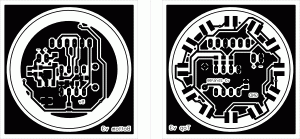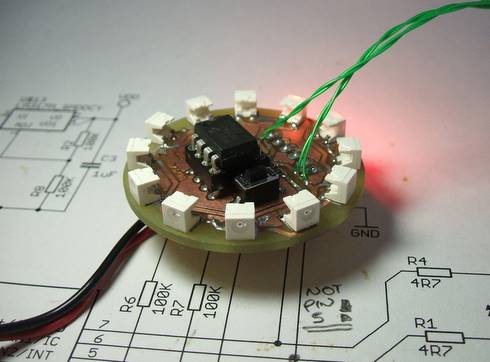Update: I’ve revised the schematic for this project and had a proper PCB made, see the new version here.
For anyone who is interested (Hi Richard) here are my project files for the lighthouse project.
The project is written for the PIC12f683 using SourceBoost Technologies BoostC that I use as a tool suite in Microchip’s MPLAB. BoostC is fairly ANSI so if you’re using another C then it wouldn’t be hard to convert. There’s a free version of BoostC too and I think my program will fit within it’s limits.
C source code here (7kb). : Compiled hex binary here (1kb zip).
The schematic and circuit are drawn up using the free version of Cadsoft Eagle. They were created using version 4, but the latest version of Eagle is v5 which I’ve not used yet, however the circuit is fairly simple so I doubt there would be any problems.

High resolution combined print for top and bottom of circuit for toner transfer. (4800x2222px, 163Kb)

Schematic layout of circuit. Note that in the real thing I added a couple of DIP switches in the GP0 & GP1 lines just before the resistors R4 & R5 to isolate the ICSP data and clock lines when programming. (25kb)
I’ve not included the Eagle files themselves as they make use of some random parts that I’ve made in my own library. But the circuit is not so complex that you couldn’t copy it. If you really want them then let me know.
If you have any problems drop me a line.




